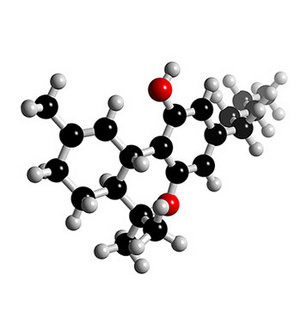Marinol is a synthetically-produced medication to mimic the effects of marijuana in cancer and glaucoma patients. The drug has been marketed as a safe alternative to medical marijuana, and is completely legal to purchase. However, the question remains whether or not Marinol is up to par with medical marijuana in terms of health benefits.
Why would a drug be synthetically produced in order to create the same effects of something that occurs naturally in nature and can be taken just as easily? Well, in this particular case since it is illegal to sell, possess, or use marijuana in the United States, a country that has seen marijuana used medically, then it seems obvious that to avoid decriminalizing marijuana a viable alternative should be created. In order for a synthetically-produced substance to be superior to a naturally-occurring substance, it has to pass certain tests. The first test is that it has to pose less side-and adverse effects when compared to the naturally-occurring substance. The second is that it has to produce comparable beneficial effects compared to the naturally-occurring substance. And finally, it has to be cost-effective for the consumer. In this particular case the final test is quite important because both Marinol and medical marijuana are used by patients with a terminal illness whose medical bills are already very high.
Hard data has been hard to come by for comparing medical marijuana with Marinol in terms of their use within the patient community. The legality of marijuana in California and wholesale production of Marinol are both relatively recent phenomena. Therefore I have provided several sources of estimates for the forthcoming figures.
First, we will examine whether or not Marinol poses fewer side-effects than medical marijuana. According to Rxlist.com and Drugs.com, Marinol produces few side effects that are not experienced by medical marijuana users. Shared side-effects include tachycardia, giddiness, and trouble walking. Since adverse reactions have been documented only in 1% of the population, Marinol appears to be relatively safe to take as an alternative to medical marijuana. The biggest problem with using medical marijuana is that harmful substances can be absorbed into the lungs when smoked. Since Marinol is taken in capsule form and does not contain many of the problematic compounds found in marijuana smoke, it has been deemed a safer alternative. However, since THC in marijuana can also be released in the digestive tract when it is prepared in baked goods and fats, the damaging respiratory effects are bypassed. Therefore, Marinol’s superiority in terms of potential side effects is contingent on the way in which medical marijuana is consumed.
The second test concerns whether or not Marinol has comparable benefits to medical marijuana. Marijuana contains nearly sixty cannabinoids, some of which have potential in killing pain and reducing inflammation. Marinol contains only one active cannabinoid, dronabinol, which is responsible for its pain-killing, nausea-reducing, and appetite-regaining effects. More research has to be done into the viability of medical marijuana’s numerous cannabinoids, yet there has been a markedly mixed reaction within the patient community concerning the preferred substance. In terms of the amount of time it takes to feel the effects, Marinol takes markedly longer than smoked medical marijuana. Since it requires absorption in the digestive tract, Marinol capsules take around an hour to take effect. Conversely, users of smoked medical marijuana feel the effects within five to ten minutes. Of course, if patients wish to smoke the medical marijuana instead of ingesting it (which takes a comparable amount of time to Marinol), they run the risk of respiratory damage.
The final test involves a cost comparison of Marinol and medical marijuana. According to a comparison on medicalmarijuanaprocon.org, an average yearly use of medical marijuana of 336 grams would cost the patient $3,964.80. Using an estimated ratio of comparable use, the yearly cost of 4,562.5 mg of Marinol would cost the patient $8,258.13. If these figures are accurate, then a patient would be paying over twice as much for a comparable yearly dose of Marinol than for medical marijuana. Medicalmarijuanaprocon.org used data from 2002 for its findings, but it is safe to say that price inflation and availability has not significantly altered these price figures over the past four years. In terms of cost, marijuana takes less resources and energy to produce than synthetic drugs, which require petroleum products, refining, and use of many more inactive ingredients.
So, which is preferable to use? It’s hard to say. Marinol does not contain many active cannabinoids that medical marijuana does, so it might not offer the same benefits. However, Marinol does not need to be smoked and thus does not pose the same kinds of risks to the lungs as smoked marijuana. But, as has been discussed, medical marijuana can also be consumed orally, which reduces its damaging effects on the respiratory system. But once again, this comes at a price. If consumed orally, medical marijuana takes as long as Marinol to take effect in comparison to smoked marijuana’s much quicker absorption rate. Finally, medical marijuana is much cheaper to both produce and to purchase than synthetically-produced Marinol.





